オサム・ジェームス中川 インタビュー
by Kenji Takazawa/タカザワケンジ
Tokyo Photographic Art Museum,
2019年7月3日
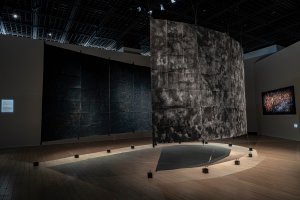
「イメージの洞窟:意識の源を探る」展にはバックグラウンドの異なるさまざまな作家たちの作品が展示されます。そこで、展示を準備中の出品作家にご登場いただき、作家自身の言葉で作品について、「イメージの洞窟:意識の源を探る」展についてお話しをうかがいました。
オサム・ジェームス・中川さんはニューヨーク市生まれ、東京育ち、そしてアメリカ・ヒューストンでアートと写真を学んだ写真家。現在は、インディアナ大学で教授を務めています。今回、展示する作品は沖縄の洞窟で撮影した〈ガマ〉。いったいどのような作品なのでしょうか。(インタビュー・文=タカザワケンジ)
Read more
Osamu James Nakagawa Interview
by Sara Fahling
YIELD MAGAZINE,
2019年2月1日
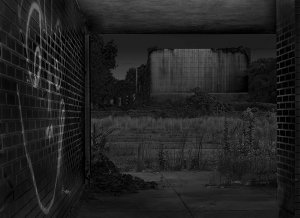
Sara Fahling Your Eclipse series is very dark and quiet, almost menacing. It feels like a horror film or some sort of dystopian environment. Do you see any hope or light at the end of the tunnel when you look at this series? Is that where the idea of an eclipse comes in?
James Nakagawa As an artist I want to raise questions. I want people to think, “There's something wrong here. There’s something unsettling happening.” Because I’ve looked at my straight black-and-white prints of drive-in theaters right next to this new work, clearly, there is a mood—you used the word menacing; it’s all intentional.Americans see the big screen of the drive-in theater as a nostalgic icon. But how can I not obviously subvert that? I am giving American viewers a very familiar nostalgic symbol, but I am making it menacing. They have to think about the past, by looking at that dark, familiar landscape, and wonder, “What went wrong?”
Read more
Close Up, Osamu James Nakagawa
by CANON
New Cosmos of Photography,
2017年11月1日

現在、インディアナ大学で写真の教鞭をとるオサム・ジェームス・中川氏。NYに生まれ、日本とアメリカを行き来する中、どちらの地でもアウトサイダーである自分を感じてきたという。グランプリ選出審査会を終えて、第39回公募全体について感想をうかがいました。
— グランプリ選出公開審査会はいかがでしたか?
僕が優秀賞に選んだ金サジさんが、最終的にグランプリとなったことが本当に嬉しかったですね。彼女の作品の核となる部分は、在日の韓国人であるという境遇から生まれているもので、そんな彼女の問題意識が認められたわけです。
— 応募作品全体を通して、感じられたことはありますか?
いろんな作品がありましたが、写真と制作意図とのギャップを感じる作品が多数ありました。写真に対する自身の考えが深くない、またはその逆に、写真が追いついていないという印象です。アーティストとしてなすべきことは、その落差をどうすれば近づけていけるのかを考え、実際に表現していくことなのです。特に、日本国内からの応募作の多くは、制作意図が曖昧で、写っているモノについての話を避けている人が多い。ステートメントではたとえ話ではなく、現に写っているものの話をする必要があります。また、手法の説明に終始せず、作品で伝えたいことを濁らせないことが大切です。私事は大事ですが、作品が私事から、世の中や日本で起きている問題の争点に繋がるといいですね。そうすることで、作品は問題をはらんでくる。それが面白いんです。
— 海外応募はデジタルデータのみの受け付けになりましたが、海外、日本と応募作の違いを感じられることはありましたか?
これは海外、日本問いませんが、トレンドを追いかけるのではなく、写真新世紀ならではの、写真の概念を崩すようなリスキーな作品が出てきても良いのではないかと思いました。
特に日本の応募作品は私写真、心象風景のスタイルが多く、個から社会に向けて問題提示をしている作品が少ないなと思いました。
Read more
Kai: Following the Cycle of Life
by Coralie Kraft
Lens Culture,
2017年10月3日
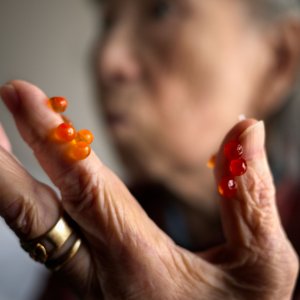
When he snapped the image that later made it into The New York Times and caught the eye of Anne Tucker, curator at the Museum of Fine Arts, Houston, Osamu James Nakagawa had no idea that he was beginning a series that he would continue to add to for decades. Primarily known as a digital photographer at the time, Nakagawa was used to thinking of “straight photography” as material for his larger digital compositions, not individual works in their own right. Stuck in the swirling eddies of a personal tragedy—one of those disconcerting periods of life in which your world is collapsing in around you while everyone else keeps moving forward—he picked up his film camera as a channel for relief.
The resulting series, titled Kai, encapsulates a dialogue that Nakagawa has had with himself (and his students) since he first started taking photographs: the relationship between the work and medium. Why should one project be shot on film and another digitally? The heart of this debate first came to the attention of Nakagawa organically, almost two decades ago. Confronted with both burgeoning new life and the blunt finality of death, Nakagawa made photographs as a way to cope with the swift changes around him. Only afterwards did he recognize that the series could only have been shot on film; that the medium is as integral to the project as the subjects themselves...
Read more
Profiles: Audio Interview
by Yael Ksander
Indiana Public Media,
2016年8月28日
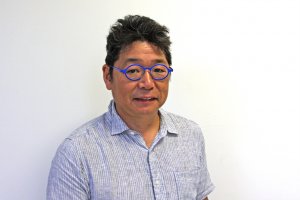
The nature of photography is recording reality . . . but I’m interested in things you cannot see. — Osamu James Nakagawa
Osamu James Nakagawa’s photographs are exhibited internationally. He’s best known for his Okinawa trilogy, which includes Gama, Banta, and Remains.
His other bodies of work include Mado, his window series, Drive in Theater, and May 15s. In 2009, he won a John Simon Guggenheim fellowship, and in 2014 he was named the Sagamihara Photographer of the Year in Japan.
Since 1999, he has been teaching workshops at the International Center for Photography in New York.
Listen here
International Center of Photography
by Nandita Raman
2015年10月30日
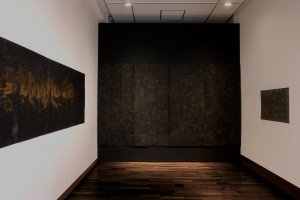
Nandita Raman speaks to Osamu James Nakagawa, an artist in "I need my memories. They are my documents.", a group exhibition she curated on view at sepiaEYE gallery through October 31, 2015.
Despite the slipperiness of memory, Louise Bourgeois insists that they are her documents and adds, "You have to differentiate between memories. Are you going to them or are they coming to you? If you are going to them, you are wasting time. Nostalgia is not productive." Documentation is often done to create an archive, a remembrance, but Bourgeois reverses this process choosing to rely on the mutable and the uncertain. The paradoxical place between memory and document is the location of the works in this exhibition.
The group exhibition, "I need my memories. They are my documents." at SepiaEYE gallery features photographs and videos by five artists who work with a repository of existing visual materials. Osamu James Nakagawa brings together the contrary moments of the past and the present into his triptychs and collages. In Ma: Between the Past, Nakagawa juxtaposes his images of Japan and the United States with his father's and grandfather's photographs and film strips that were handed down in a suitcase by his father. The repetition of some of the motifs, like the mountain in his work that is multiplied by its reflection in water and lingers on the neighboring image’s wallpaper, brings attention to movement and displacement. Nakagawa says, "I began to question my own past, not only my memory, but also the unfamiliar past that I had inherited. This series searches for a link to my past and its future passage to my daughter..."
Nandita Raman: You seem to have two distinct strains in your practice—political and personal. Do they feed into each other? How?
Osamu James Nakagawa: Yes, I have two modes of working. One is personal and introspective; the other is to visualize the political, social, cultural, and historical events through my cross-cultural experiences. When I was younger I separated the two, but as I've gotten older I have merged the two different modes of working to connect the viewer with both a visual and sensory experience.
When I exhibited the Banta Cliff work, many people mentioned that they felt a sense of vertigo when viewing the work and sometimes they see faces in the texture of the cliff's surface. They have been internalized as ghostly or spiritual photographs. With the Gama Cave work, I wanted to create work that can give the audience a visceral experience.
Read more
Osamu James Nakagawa, Banta Cliffs + Gama Caves
by Natalie Zelt
Spot Magazine,
2012年3月16日

Poissant Gallery during FotoFest 2012
I was first introduced to the cliffs and caves of Okinawa on the floor. In 2010 Osamu James Nakagawa brought prints ofBanta Cliffs and Gama Caves to the MFAH. As he unrolled what appeared to me to be massive textured abstractions he started to tell the story of the cliffs, his experiences photographing and the palpable weight the Island’s history. It was jarring to look down on these prints, knowing that among other things, this was the site where a large number of Okinawans committed suicide amidst the Battle of Okinawa in WWII. Nakagawa’s images deliberately tilt his viewer’s perspective, instilling each image a radical composition combined with a lush detail that cause the viewer to second guess their position in relation to the rock. In one image the viewer is gazing down a precipice, a slice of roaring sea just visible. Another pulls the viewer face to face with the sharp crags and pocks of the rock, as if standing above the ocean floor. In his newer series Gama Caves, Nakagawa draws his viewers into the earth, illuminating dark caverns that are both sacred sites for the island’s shamans and sites of violence and death during the World War II.
Visitors to Poissant Gallery during Fotofest 2012 had the opportunity to encounter Nakagawa’s photographic renderings of both Banta Cliffs and Gama Caves along with a video installation. Through this exhibition, Nakagawa delivered an experiential excavation of the Okinawa and its history. This interview addresses the work made in the caves... Read full PDF
Read more
写真の町東川賞2010 新人作家賞を受賞
by Aki KUSUMOTO
Nippon Camera Photography Annual,
2011年1月1日
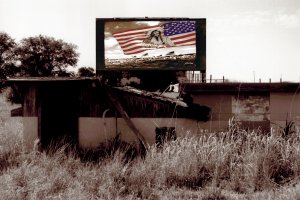
アメリカ合衆国インディアナ州在住のオサム・ジェー
ムス・中川氏が、写真の町東川賞2010 の新人作家賞を
受賞した。対象は沖縄の佐喜眞美術館で2009 年夏に行
われた展覧会「ジェームス中川写真展―BANTA―」及
び2010 年にニコンサロンにて行われた「オサム・ジェ
ームス 中川展 BANTA:沁みついた記憶」である。
新人賞とはいえ、インディアナ大学芸術学部写真学科に
て教鞭を執り、アメリカにおいて数々の賞も受賞してい
る中川氏だ。日本では過去に、1995 年に「第1回東京
国際写真ビエンナーレ」(東京都写真美術館)にて優秀
賞を受賞、1998 年に行われた「メディアローグ:日本
の現代写真’98」(東京都写真美術館)に出展、しかしな
がら、佐喜眞美術館での展示があるまでは一般にはほと
んどその作品についても人物についても知られていなか
ったといってよいだろう。氏の生い立ちや作品について、
話をうかがった。
生い立ち~大学まで
父親の仕事の関係で1962 年にニューヨークで生まれ
た中川氏は、生後7 ヵ月で両親とともに帰国、15 歳まで
東京で暮らす。その後、父親の転勤を機に再びアメリカ
へ戻り、ヒューストンの高校に進学。大学は美術コレク
ターのドミニック・ド・メニルの財団が作った、ユニー
クな校風で知られるセントトーマス大学でアートを専攻
し、写真や彫刻や絵を学ぶ。
大学を卒業してからは86 ~ 88 年まで東京に戻り、伯
父である写真家の小川隆之氏のアシスタントを勤める。
また、ナショナルジオグラフィー、ライフ、マグナムの
写真家の通訳兼アシスタントも務めるが、ステレオタイ
プな「日本」ばかりを対象とした依頼仕事に違和感をも
つ。コマーシャルやエディトリアルではなく、アートと
してのシリアスな写真を勉強しようと、ヒューストン大
学修士課程に三年間通う。。。
Read full PDF
BANTAとGAMAをめぐって
by Osamu James Nakagawa, Mariko Takeuchi, Yoshi Higa
LPマガジン08,
2009年9月9日









